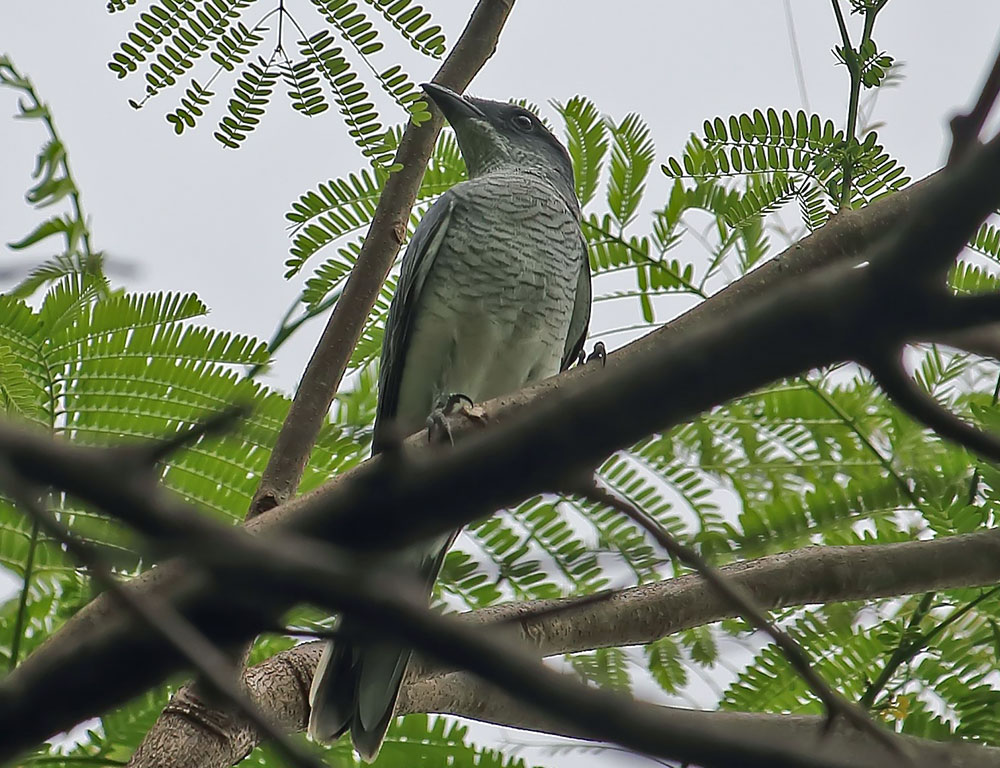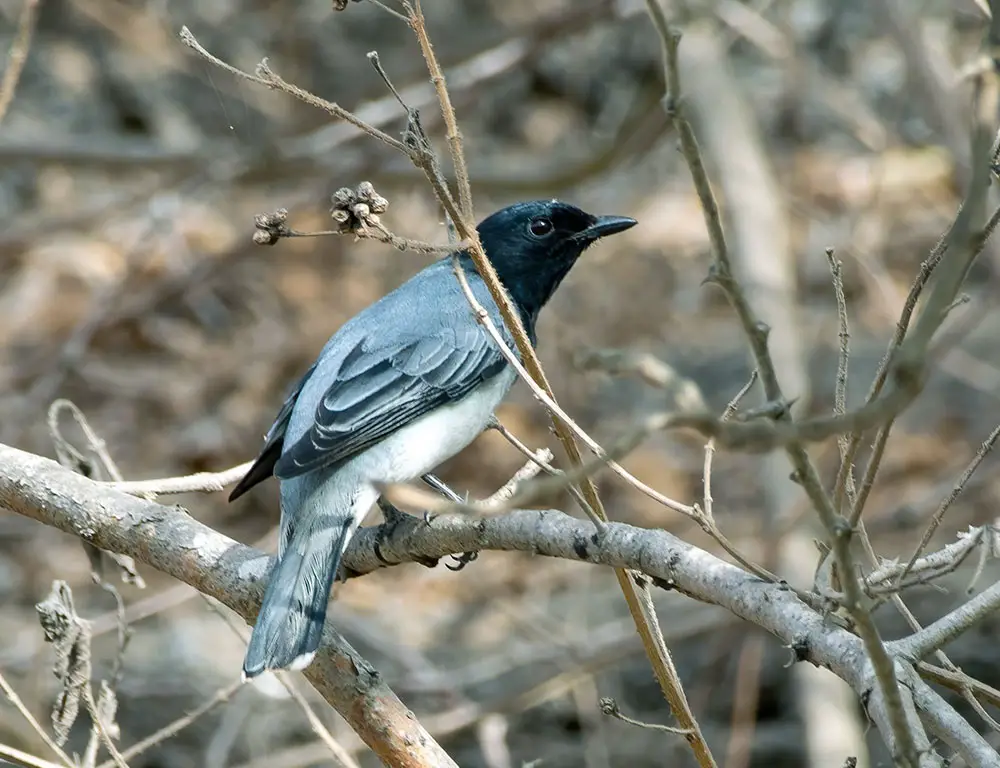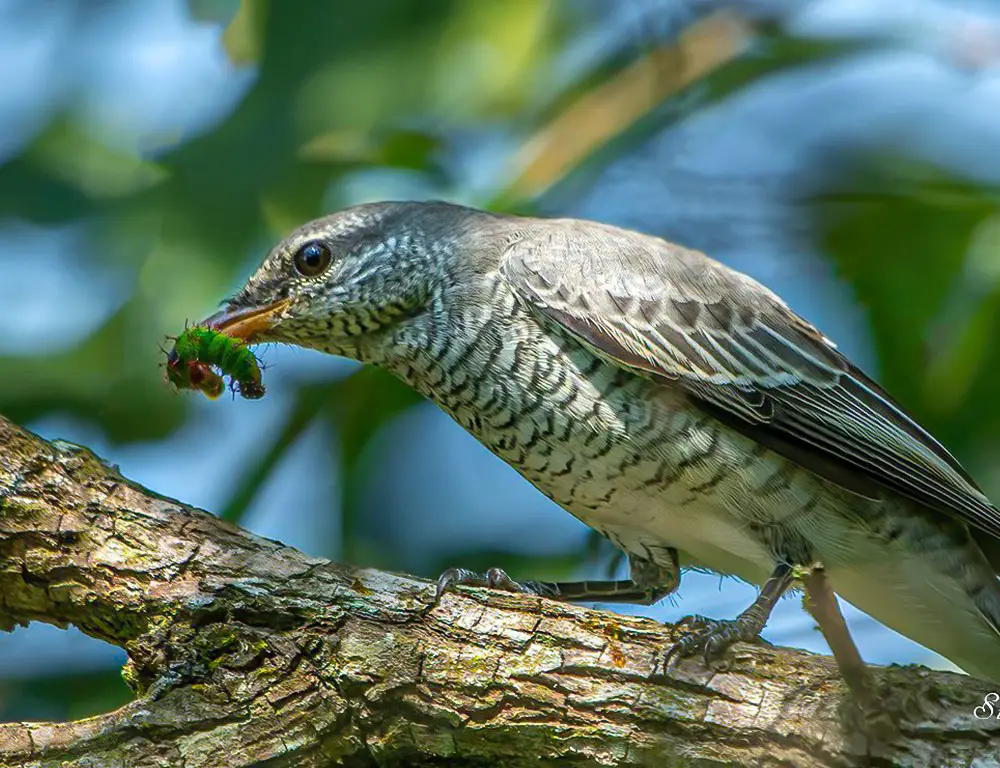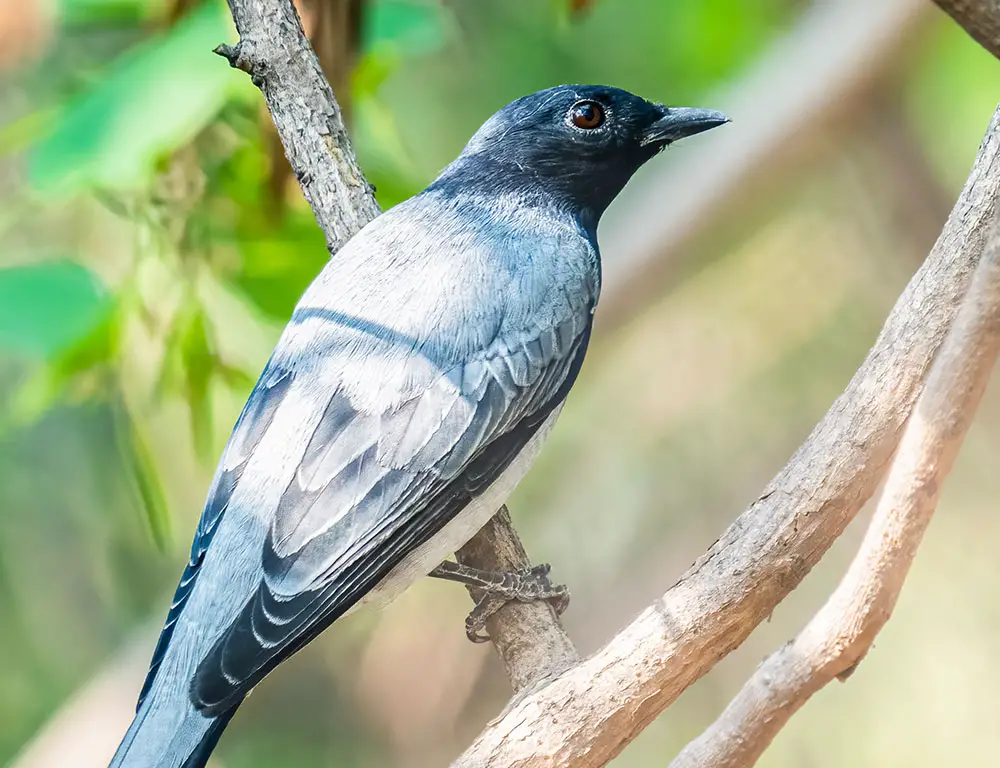If you’re a bird enthusiast like me, you’ve probably heard of the Black-Headed Cuckooshrike. This fascinating species, known by its scientific name Coracina melanoptera, is an intriguing subject for amateur bird watchers and experienced ornithologists alike.
Known for their distinctive black heads and ashy grey bodies, these birds are a sight to behold. They’re native to South and Southeast Asia – from India, Sri Lanka, Indonesia, and the Philippines.
What sets them apart, though, isn’t just their unique appearance – it’s their unusual nesting habits.
Unlike most birds that build their nests, cuckoo shrikes have been known to ‘borrow’ the nests of other birds. It’s a behavior that’s earned them their quirky name and made them a topic of interest among bird enthusiasts worldwide.
From their diverse habitats to their peculiar nesting tendencies, I’ll explore everything there is to know about these remarkable creatures in this blog post.
Habitat and Distribution of the Black-Headed Cuckooshrike

The black-headed cuckooshrike (Coracina melanoptera) is a fascinating bird with remarkable adaptability and broad distribution across South and Southeast Asia.
Habitat Preferences
These birds exhibit a broad tolerance for different habitats, ranging from dense forests to more open rural landscapes. They particularly favor deciduous forests and secondary growth areas.
Additionally, they are often found near human settlements, including gardens and orchards. This adaptability to natural and human-altered environments contributes to their successful colonization of various regions.
Altitudinal Range
Black-headed cuckoo shrikes are not restricted by altitude and have been observed at elevations up to 2000 meters above sea level in the Himalayas. This ability to thrive across various altitudes further demonstrates their versatility and adaptability.
Distribution
The distribution of black-headed cuckoo shrikes spans a vast geographical area, encompassing the Indian subcontinent and extending eastwards into Southeast Asia.
Here are some key regions where they are commonly found:
- Indian Subcontinent: They are primarily distributed across the entire Indian mainland, excluding the extreme northwest, as well as in Nepal, Bhutan, and Bangladesh.
- Southeast Asia: They are commonly sighted throughout Myanmar, Thailand, Cambodia, Laos, and Malaysia.
- Islands: Their presence has been noted on various islands, including the Andaman Islands (India) and the Indonesian islands of Sumatra and Java.
Adaptability and Resilience
The extensive and varied distribution of black-headed cuckoo shrikes reflects their remarkable adaptability to diverse environmental conditions.
Their ability to thrive in different habitats and altitudes highlights their resilience and underscores the adaptability of wildlife to changing landscapes.
Physical Characteristics of the Black-Headed Cuckooshrike

The Black-Headed Cuckooshrike (Coracina melanoptera) is indeed a visually striking bird, characterized by several distinct physical features:
Adult Male
- Body Color: Predominantly slate grey.
- Head & Throat Color: Jet black, creating a stark contrast against the grey body.
- Size: Typically measures 22 to 29 cm (8.6 to 11.4 inches), with an average wingspan of 20 to 23 cm (7.8 to 9 inches).
Adult Female
- Body Color: Smoky grey, with a slightly less dramatic appearance compared to males.
- Head & Throat Color: Dark grey, blending more subtly into the rest of the plumage.
Sexual Dimorphism
As with many bird species, there is evident sexual dimorphism in Black-Headed Cuckoo shrikes, with males displaying more striking colors than females.
Eye Color
One of the most noticeable features of the Black-Headed Cuckooshrike is its vibrant yellow iris, encircled by an eye ring of the same color. This gives the bird an intense gaze that is hard to miss and adds to its overall visual appeal.
Juveniles
Juvenile Black-Headed Cuckoo shrikes typically have spotted or streaked feathers, which gradually transform into the sleeker plumage of adults as they mature. Even in their early stages, they exhibit unique characteristics contributing to the species’ overall appeal.
Diet and Feeding Habits of the Black-Headed Cuckooshrike

The Black-Headed Cuckooshrike’s diet and feeding habits are indeed fascinating and demonstrate their adaptability to varying food sources and environmental conditions:
Diet Composition
- Insects: Their primary diet consists of insects such as caterpillars, beetles, ants, wasps, and other small invertebrates. They are skilled hunters, capable of catching prey mid-flight or plucking them off leaves precisely.
- Fruits and Berries: During seasons when insect availability is low, they supplement their diet with fruits and berries. Commonly consumed items include figs and small wild berries, adding variety to their typically carnivorous menu.
Feeding Behavior
- Opportunistic Feeding: Black-Headed Cuckoo shrikes are opportunistic feeders, readily exploring new territories such as gardens and human settlements when insect populations are high.
- Adaptability: They adapt their feeding habits according to food availability, demonstrating a flexible approach to resource utilization.
- Feeding Frequency: Adults feed numerous times throughout the day to meet the energy demands of their active lifestyle, particularly in flight. Both parents feed juveniles until they are capable of hunting independently.
Parental Care
Both parents share the responsibility of feeding their young until they reach independence. This cooperative behavior ensures the proper nourishment and development of the offspring.
Conservation Awareness
Observers and enthusiasts need to respect the Black-Headed Cuckooshrike’s habitat and space, preserving the environment they depend on for food and shelter.
By understanding and appreciating their dietary preferences and feeding habits, we can contribute to their conservation and ensure their continued presence in the ecosystem.
Conservation Status of the Black-Headed Cuckooshrike

The conservation status of the Black-Headed Cuckooshrike (Coracina melanoptera) is currently assessed as “Least Concern” by the International Union for Conservation of Nature (IUCN) Red List.
This designation indicates that the species is not facing immediate threats to its survival, and its population is considered stable.
However, it’s essential to recognize that being labeled as “Least Concern” doesn’t imply that conservation efforts are unnecessary.
On the contrary, it serves as a reminder of the importance of ongoing monitoring and conservation actions to ensure the long-term well-being of the species.
Key points regarding the conservation status of the Black-Headed Cuckooshrike include:
Population and Range
The exact population size of the Black-Headed Cuckooshrike is unknown, but it is believed to be stable. The species has a wide-ranging habitat spread across various parts of Asia and Oceania, covering approximately 10 million square kilometers.
Habitat Preferences
Black-Headed Cuckoo shrikes typically inhabit woodlands, open forests, and gardens. They prefer subtropical or tropical moist lowland forests and heavily degraded former forests.
Despite their adaptability, changes in their environment could impact their long-term survival.
Conservation Measures
Presently, no specific conservation measures are targeted directly at the Black-Headed Cuckooshrike. However, efforts to protect significant forest habitats indirectly benefit the species.
Future Challenges
While the current conservation status suggests stability, unforeseen challenges such as habitat loss, climate change, and other environmental factors could pose risks to the species in the future.
Continued observation and conservation efforts are essential to mitigate these potential threats.
Conclusion
I’ve spent significant time studying and observing the Black-Headed Cuckooshrike. It’s clear that this bird species, with its unique behaviors and features, adds to the rich diversity of our avian world.
The Black-Headed Cuckooshrike’s adaptability is indeed impressive. They thrive in various environments, from forests to urban areas. This adaptability has played a crucial role in their survival despite habitat loss due to deforestation and urbanization.
Their feeding habits also contribute to their ecological significance. By preying on insects, they help maintain a balance in insect populations.
Their diet consists mainly of caterpillars, beetles, and ants:
| Food Source | Percentage |
|---|---|
| Caterpillars | 40% |
| Beetles | 30% |
| Ants | 30% |
Furthermore, it’s fascinating how these birds have evolved. The males’ black head and grey body provide excellent camouflage, while the females’ barred underparts might be an adaptation for nest camouflage.
However, there are still many unanswered questions about this species. For instance – what factors influence their migratory patterns? How do they choose their nesting sites?
Continued research will help us uncover more about these intriguing creatures and can aid conservation efforts.
- Remember: Every species plays a vital role in our ecosystem.
- Conservation is not just about saving individual species; it’s about maintaining biodiversity.
In closing, my study on the Black-Headed Cuckooshrike shows that understanding such species better equips us to appreciate the complexity and beauty of nature around us. It reminds me again why I am so passionate about ornithology – every bird has its tale to tell!